Why All the Food Photos? (at evolt.org)
The Internet has a thing for cats. In fact, it has been argued that the Internet is made of cats. There's really no denying it, at least when taken in the whole of the internet (I've even fallen prey to it).
Social media, on the other hand, seems to have a thing for food. While social media is just one aspect of the Internet, we can take comfort that social media's penchant for food is not about cat food or edible cats. It is hard to deny, however, that social media, with its friendliness to instant image uploads, constant quick commentary, and location-based tendency, is dominated by food.
Sites like Foodspotting reward people for posting food photos. Foursquare has made it very easy to associate food with a venue and actively promotes it. In the absence of photos, people sometimes just type what they are eating without even posting a photo. The activity is so popular it's regularly derided as overdone.
Why Does Everyone Else Do It?
I've seen many attempts to explain the food photography trend, some of which are well-reasoned and others seem to be couched in jealousy. The magazine Psychology Today offered its own list of why people post food photos (citing Facebook specifically) in the article "10 Reasons Why People Post Food Pictures on Facebook," which I have reproduced in less detail here, but with links to my own food photos that seem to match the reason:
 Check This Out — Just to share the incredible experience;
Check This Out — Just to share the incredible experience; Look How Good I Am — To show you are eating healthy;
Look How Good I Am — To show you are eating healthy;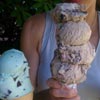 Look How Bad I Am — Odd form of confession;
Look How Bad I Am — Odd form of confession; Can You Believe I Ate This? — Proof you ate that weird thing;
Can You Believe I Ate This? — Proof you ate that weird thing; Help Me — An addict's cry for help;
Help Me — An addict's cry for help;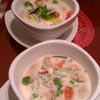 Food Advice — Helping your fellow man on what to order;
Food Advice — Helping your fellow man on what to order;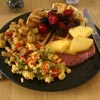 Cooking Magic — Bragging about your l337 cooking skillz;
Cooking Magic — Bragging about your l337 cooking skillz;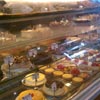 Cravings — For those bits you want, but didn't eat;
Cravings — For those bits you want, but didn't eat;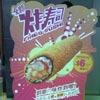 Gross — For those bits you didn't want, and didn't eat;
Gross — For those bits you didn't want, and didn't eat; Know Me — You are what you eat, in more ways than one.
Know Me — You are what you eat, in more ways than one.
Mashable posted an infographic (I use the term loosely) in the story "What's Behind the Food Photography Trend?" breaking it down into numbers and even offering 8 reasons why people post food photos. As I did above, I present the 8 reasons along with photos of my own that seem like a fit for each reason:
 25%: Food diary;
25%: Food diary; 22%: Document a self- creation;
22%: Document a self- creation;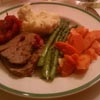 16%: Special occasion;
16%: Special occasion; 12%: Food art;
12%: Food art;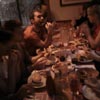 10%: Friend/ family moment;
10%: Friend/ family moment;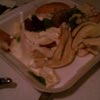 8%: Restaurant/ food review;
8%: Restaurant/ food review; 4%: Tutorial/ recipe;
4%: Tutorial/ recipe; 3%: Extreme food.
3%: Extreme food.
It's hardly fair to mention the infographic without showing you a snippet and providing a link to see it in its full-sized glory:
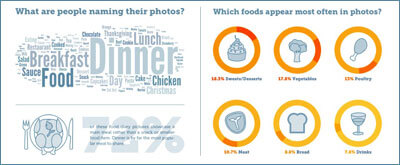
Back in August ReadWriteWeb responded to the news that Foodspotting had reached one million downloads by asking the simple question, "Do You Take Pictures of Your Food? Why?" ReadWriteWeb collected responses on its page and while there was no statement about how responses were selected, only a couple people stated that they do not. The majority of responses were almost bragging about their regular posting of food photos.
Why Do I Do It?
Many of the reasons listed above apply to me. I grew up in a very food-oriented family. I was fortunate enough to have a home-cooked meal nearly every night, and on those nights free of cooking we still ate as a family. My father has been in the food business his entire life, which has leached into my blood in part. Our family events are typically anchored with food, no matter the number of people showing up.
When I travel, I keep a travelogue (with which I assault my Twitter followers) of things I see and do, and I will judge a trip partly based on the foods I experience (I let London off the hook a bit on this one). Even in my day-to-day life, my local outings typically involve a food component (or destination or goal). I also never have to ask permission from the meal (though I do tend to ask permission from my fellow diners).
At my company we have created a culture of food here, as evidenced by the overwhelming number of food photos for our Foursquare venue along with the blog posts from staff that talk about our regular work-food events ("Togetherness Through Tastiness: How Food Unites Us" and "Training Disguised…"). These activities help bring people together and foster a sense of community and even family within the team, which creates a happier, healthier work environment.
Is There a Business Case in Here Somewhere?
The company that created that infographic I linked above, 360i, also released a report to go along with the image, providing some more context for those of us who like to read the methodology behind these overly-distilled "infographics." I have embedded a Scribd version of the report below, though you can still read the original post at the 360i blog.
The report captures the reasons for sharing cited above, but notes that brands are often missing from these photos — brands appear in only 12% of photos in the study. The report makes the obvious recommendation that food-related marketers could be doing more to insert their brands into food photo sharing trends.
Without offering any suggestions, I wonder if it's a matter of time before you see restaurant names branded into each cut of meat they serve.
The National Restaurant Association released a study in 2011 (Inside the Mind of Today's Consumer: Why Restaurants are Poised for Success in 2011 and Beyond) showing that the more connected and "social media savvy" a customer, the higher the likelihood that the customer will purchase food from a restaurant — whether to sit, for take away, or for delivery. The following table breaks down some of those numbers, but the report goes into more detail:
| All Adults | Connected Adults | Social-Media Savvy Individuals | |
|---|---|---|---|
| Eat a meal at a sit-down restaurant with wait staff service | 84% | 89% | 92% |
| Purchase a meal or snack from a fast-food restaurant or carry-out place | 83% | 89% | 87% |
| Purchase dinner from restaurant, carry-out or delivery place to eat at home | 72% | 78% | 80% |
Social media has been a boon to the food truck industry in particular. Food trucks often rely on social media to let potential customers know when and where they may be even when they have a set schedule. In addition, using social media for promotions and specials can engage even more customers. Food truck customers are typically social media users, and some of them are food photo posters. Rewarding them to post photos that include the brand can drive exposure for a food truck to an even broader audience, often with a de facto endorsement from the person posting.
Locally there is a twice annual event called Local Restaurant Week, where participating restaurants run a $20.11 deal (for 2011, it was $20.10 in 2010) for a week. Social media is a key marketing method leading up to the week, and participants who post check-ins, reviews and photos are re-tweeted to help keep interest high throughout the week. Many restaurants see a spike in customers and manage to retain them after the week-long event. Similar to food trucks, finding ways to reward customers for posting food photos can extend a restaurant's reach to even more people.
It seems clear to me that customers who take and share photos are those who are also driving more business. It's probably in the best interest of restaurants (and other food retailers, as I sometimes post from my local grocer) to reach out and engage customers using social media. Even if food retailers do nothing more than look at what customers tend to post of their meals or food purchases, retailers can learn about perceptions and preferences they may not be able to glean from standard marketing and research methods.
A Word of Caution
Food retailers should be careful when leaning on social media outlets for free marketing. As ConAgra discovered when it served frozen food to food bloggers ("ConAgra Hidden-Camera Dinner Infuriates NY Food Bloggers"), the backlash can sink a campaign. I suspect the food bloggers didn't want to be on the record as confusing factory-extruded meals with quality restaurant fare, so after complaining ConAgra was unable to use any of its footage from the event.
Leave a Comment or Response